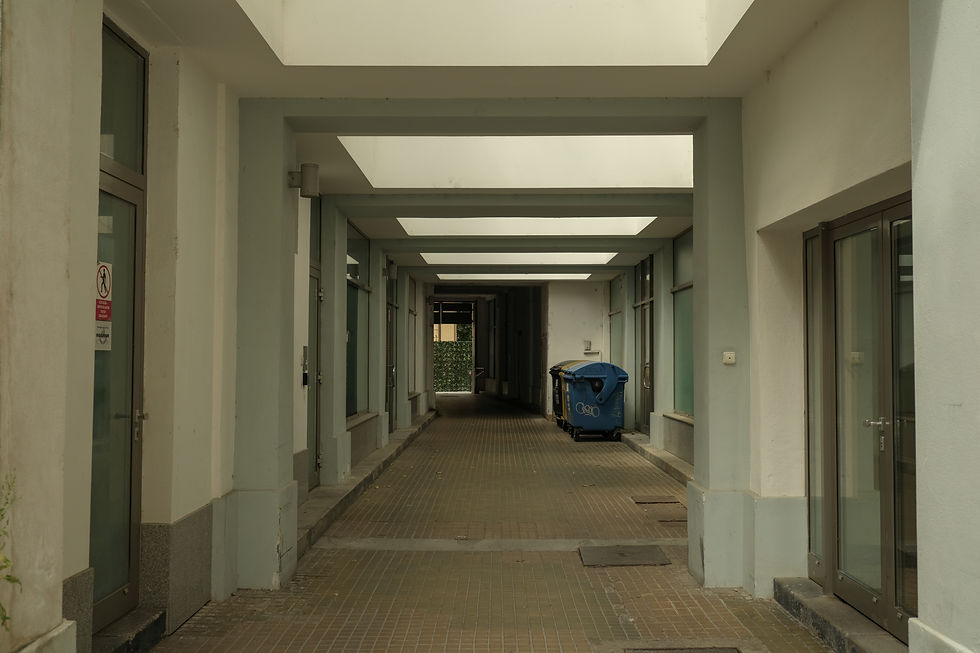Editorial Liminal Spaces
- TOPOS

- Sep 9
- 2 min read
Dear readers,
Among peers, I think the term 'liminal space' is most closely associated with the definition given by the horror genre and video games. Here, liminal spaces are the abandoned areas that have an eerie and sometimes even surrealistic appearance. That eeriness arises from a certain familiarity with a place, while lacking any form of context, causing the place to seem very familiar but not actually trustworthy. The result: transition zones that never seem to end and a goal that is never reached. A strange and unpleasant feeling that echoes on in many horror games.
There are multiple definitions of the term, and different professions give their own interpretation of what a 'liminal space' entails. In art, 'liminal space' is also seen as the empty space between objects: the intermediate space. The emptiness between objects on the plane. For a proper composition, delineating the intermediate space and the intangible is at least as important as the position of the subjects. One can also practice this skill by first drawing the emptiness and then filling in the remaining space. The question that remains then is which areas actually represent the intermediate space.
In the world of medicine, understanding 'liminal space' is also crucial. Doctors interpret this term by referring to the empty space around a person's body or between their limbs. Sometimes, an ailment or unusual posture does not stand out enough when only the limbs themselves are examined. In that case, it may help to see if the empty spaces around the body are symmetrically distributed. If not, there may be a need for action. The intangible can sometimes say just as much about a person's health as the tangible.
In landscape architecture, the term 'liminal space' closely resembles the 'non-place' coined by anthropologist Marc Augé. The latter is used to refer to places that are not easily defined as 'relational, historical, or connected to identity.' It is a place where people do not gather, an anonymous and often lonely place. Its primary use is for movement, transition, which relates to the more eerie definition of 'liminal spaces'.
An important difference lies in the use of the words 'space' and 'place.' The term 'space' often refers to a geographical location and from an anthropological perspective refers to something very functional and measurable. 'Place,' on the other hand, is more associated with the cultural meaning of a location. A location that is a 'non-place' thus brings it closer to the term 'space,' and the preceding adjective 'liminal' often becomes an unavoidable consequence in the context of public space.
Best regards,
Tobias Arends
On behalf of the editorial of TOPOS








Comments